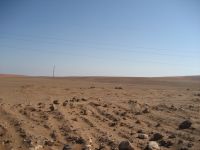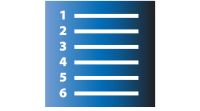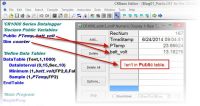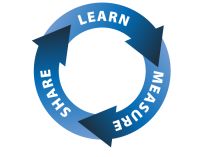El Blog de Campbell Scientific Sugerencias técnicas y recomendaciones de expertos
Displaying 161 - 171 of 171 articles
4 New Ways to Use Array Notation: Complex Scaling
Autor: Janet Albers | Última actualización: 07/01/2015 | Comentarios: 0
You can perform more complex scaling in an array without needing a For/Next loop. To take advantage of this feature, use OS 28 (CR6 OS 01) or later. In this example program, a unique set of multipliers and offsets is applied to the column of an... leer másHow to Prevent Skipped Scans and a Sunburn
Autor: Jacob Davis | Última actualización: 06/17/2015 | Comentarios: 3
Through programming, relatively slow SDI-12 measurements can coexist, without problems, alongside fast measurements. To illustrate the need for accommodations in your data logger program, I will share the story of the worst sunburn I ever got. Southern Peru is near the Pacific Ocean, yet is... leer más4 New Ways to Use Array Notation: Initializing Multi-Dimensional Arrays
Autor: Janet Albers | Última actualización: 06/10/2015 | Comentarios: 0
Initializing variables within an array is more flexible than ever with OS 28 (CR6 OS 1). You can think of a single dimensioned array as numbers in a column. Two dimensions, in comparison, puts numbers in rows and columns. The third dimension is a page. For example:... leer másMake Your LoggerNet Data Collection More Flexible
Autor: Dana Worley | Última actualización: 06/03/2015 | Comentarios: 0
If you are a user of our LoggerNet software, you know that the software can be configured to collect data from your datalogger on a regular interval. From a datalogger's Schedule tab in the Setup Screen, you can configure an interval of anywhere from a... leer más6 Common Communication Problems Involving Serial Connections
Autor: Jacob Davis | Última actualización: 05/29/2015 | Comentarios: 9
Your datalogger may record great data, but if you can't retrieve it, the data isn’t going to do you much good. To ensure your successful data retrieval, it’s essential that you can troubleshoot possible problems that may arise with PC-to-datalogger communication over a serial connection.... leer másHow to Check the Accuracy of Your Solar Radiation Measurements
Autor: Bruce Smith | Última actualización: 05/29/2015 | Comentarios: 0
Solar radiation is an important measurement for many researchers and those who are monitoring their evapotranspiration values for irrigation purposes. If you have been wondering how accurate your solar radiation measurement is, Apogee Instruments (an associated company of Campbell Scientific) has a Clear Sky Calculator mobile... leer másHow Safe Is Your LoggerNet Data?
Autor: Dana Worley | Última actualización: 05/29/2015 | Comentarios: 0
When you live in a cold-weather climate like we do here in northern Utah, it’s a welcome reprieve to spend a few days away enjoying someplace sunny and warm. A couple of days ago, as I was uploading photos of sunshine and blue skies from... leer másHow to Find and Insert Characters Using a Keyboard Display
Autor: Janet Albers | Última actualización: 05/29/2015 | Comentarios: 0
A keyboard display, such as the external CR1000KD or on-board display of the CR850 and CR3000, is a powerful tool you can use in the field. A keyboard display enables you to interrogate and program a datalogger independent of other telecommunication links. Most keys on a... leer másGoing Public with Your Variables in CRBasic
Autor: Janet Albers | Última actualización: 05/29/2015 | Comentarios: 0
When programming your Campbell Scientific datalogger, have you ever wondered whether you should be using a Dim variable declaration or a Public one? What is the difference between them, and when is it best to use each one? Dim and Public variables are temporary holding locations... leer másWelcome to the Campbell Scientific Blog
Autor: Robin Deissinger | Última actualización: 05/29/2015 | Comentarios: 0
Which of these sounds like you? I need help with the basic stuff. How do I know what kind of measurement equipment I need? When I get it, how do I set it up correctly? I need programming help. How do I make sure I'm getting... leer más4 New Ways to Use Array Notation: Simple Scaling
Autor: Janet Albers | Última actualización: 05/29/2015 | Comentarios: 0
The newest operating system released by Campbell Scientific for its data loggers is OS 28 for the CR800, CR1000, and CR3000. (The comparable operating system version for the CR6 datalogger is OS 01.) This powerful data logger OS has been enhanced so that you can... leer más







